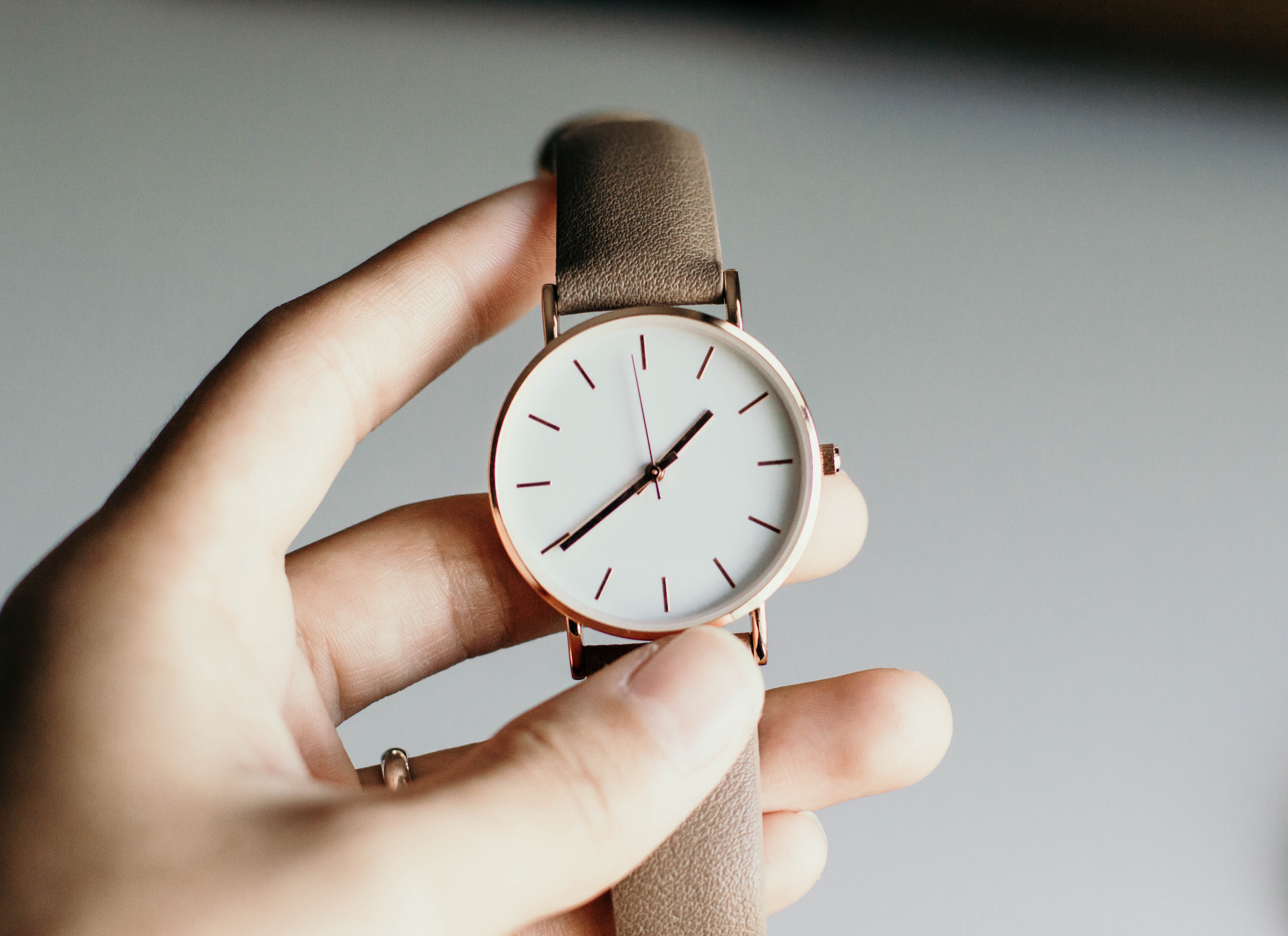We all count on online reviews when considering a new purchase, a trip, or even a visit to a new place. But what if this time, you are the one who wants to write a review? Say, for example, you are a watch enthusiast who has just purchased a nice (or not-so-nice) wristwatch, and you want to share your first impression with others. A thorough breakdown of your purchase is thus in order.
However, writing a good watch review takes good skills and considerable preparation. Without the latter, in particular, your article certainly will not be complete. Without further ado, let us see what goes into writing a semi-professional watch review. Here is a clear, step-by-step approach you should consider taking in your review.
1. Get to know the watch
Before writing about anything, you had best learn more about the item yourself. In other words, you should try the product out for a few days. Spend some time using or wearing the product. This, of course, also applies to the watch you are reviewing. Do not rush to write the first sentence as soon as you unbox it. Wear it. Get to know it from all angles and try out all its available functions and features. Match it with different outfits. Learn how to style it.
Now that you know it better through experience, you will be able to highlight the watch’s nuances and share with the readers more of its interesting features. On the whole, gaining a better understanding of the watch’s capabilities before you start writing will help you produce a more informed, well-rounded review.
2. Start with the basics
As always, it is best to begin your review with a general outline. Do not rush into the details just yet. Sometimes, your readers do not know the exact watch model they are looking at due to small variations in price range, brand name, and so on. So start with that kind of information. Share with your readers the specific model you are reviewing, who made it, when it was released, its price, and other such details.
All this information is enough for people to decide whether to continue reading through a more thorough timepiece breakdown. Make sure to also pay attention to the more technical aspects of the watch, such as its movement type (mechanical, quartz, or automatic), case material, band type, and so on. These are details that are extremely important to experienced watch fans.
3. Describe the design
The truth is, in modern times, a watch is more of an accessory than a necessity. We all have smartphones which we can use to check what the time is. However, people value a good watch for its classy designs and the status it represents. Hence, describing how a watch looks is essential to any review. In fact, this is arguably a deciding factor in whether or not a person is willing to buy the watch.
When describing the watch’s design, start with its overall aesthetic and style. This helps you to determine and explain what outfits or overall look goes best with the given model. Emphasize certain standout features and design elements. Discuss the things you personally appreciated the most or did not fully get, such as case size, font, the look of the markers, and the like. All these little details must be considered and acknowledged when reviewing a watch’s design.
4. Focus on functionality
The times when a watch had one function and one function only, telling the time, are long gone. Now, watches can do so many things at once. We mean, of course, the variety of cool mechanical, automatic, or quartz timepieces available in the market today. And do not even get us started on smartwatches and fitness trackers.
Nowadays, aside from telling the time, a watch also comes with many additional complications. These include chronographs, water resistance, date displays, moon phase displays, and so on. After you have gone over all these, move on to any specialties or peculiarities of the given model. This could mean any standout functions or flaws, such as a minute repeater or a tourbillon. It would also be best if you tested out these special features for yourself. For instance, you could try putting a water-resistant watch underwater or test out the accuracy of a watch’s minute repeater.
5. Talk about the quality
High quality does not always mean exorbitant price and vice versa. Price is not always indicative of how good the watch is. In talking about a watch’s quality, you should in fact start off with the watch’s brand. Explain what this business is, its reputation and its expertise in watchmaking. For instance, many watch brands have centuries worth of experience, while others are only just starting to make a name for themselves. Watchmakers who have been in the industry for centuries have a certain reputation to live up to, which is certainly worth mentioning.
Next, analyze the materials used, including the watch’s band, the movement type, and other possible elements. This part can get quite technical, so you might want to explain more obscure watch terms to your readers. Discuss how the materials used might impact the quality of the watch.
You also want to focus on the build quality of the watch. The construction of a watch plays a big factor in how it feels and looks. There should not be any loose components or shoddily-designed movements. Everything should work smoothly and cleanly.
Finally, talk about money. The value for money factor is a big one. Make your verdict and decide if the piece you are discussing is worth the money you spent on it.
6. Mention your personal experience
People can always read the watch description on the brand’s official site if they want raw facts and simple delivery. It is important to remember what people are really looking for with personal reviews. It is here that you, as the reviewer, have to deliver. Do not hide your personal opinion of the watch behind facts. Make sure to add your own opinions and evaluations of the watch when concluding each section of the review, and even a personal summary at the end.
Share your full experience with the timepiece, including how much you liked it or not, what you wore it with, and on what occasions. Talk about whether the watch was what you expected, or whether your opinion of it changed after use. You can even include observations about how the watch feels on your wrist or how others reacted to the watch.
Having these personal details in your review allows your reader to feel as if they know the watch more intimately. They also help to add credibility to your review.
7. Write for your audience
Another useful tip is to consider your audience, along with what they expect and need from the review. Think about who the target audience of your review is and what they are looking to find out. For instance, it is one thing to write for watch enthusiasts, and quite another to write for students and budget shoppers.
If you are writing a review for watch fans, they are probably more interested in all the nuances and specialties of the watch. Make sure to share with them the more technical aspects of the watch, including anecdotes on the brands’ and watches’ history. On the other hand, if your review is catered towards students, then they are probably just looking for a cheap watch option which they can afford using the money they saved on speedypaper.com. For such a review, it is more important to mention simple facts like price and everyday durability.
So, make sure to think about who your audience is before writing your review. You will only impress if you deliver the information they are actually looking for.
8. Add photos!
Of course, a good review cannot do without great visuals. Make sure to provide photo proof of all the descriptions and details you mention in your review. This includes style aspects such as the watch’s strap, dial, and case build. This way, your readers can visualize what they are looking at and get a better sense of the watch.
Remember that you need a high-resolution camera to take good pictures of a watch. Low-quality photos will drastically decrease your credibility and professionalism.
9. Keep it professional
Beyond all else, a writer has to hold to clear writing principles. Thus, a review should be well-structured and composed without errors, false facts, or inconsistencies. A review should have an introduction, a thesis statement, a main body split into several paragraphs, and a conclusion with your final opinion on the watch. All these details make your review easier to read and follow.
In addition, all reviews should undergo at least one proofreading and editing phase. Mistakes decrease the value of your work and undermine your credibility as an author.
10. Be honest
There is one last rule to follow when writing a review. Honesty. Any watch review should demonstrate your unbiased opinions of the timepiece. Your review is meant to help people make the right decision and spend their hard-earned money well. So, you want people to know exactly what to expect, good and bad.
Sure, sometimes businesses pay to have reviews written. However, in such a case, a writer should add a disclaimer about the paid work. It might throw a shadow on the piece’s credibility but ensures that readers still get a full and detailed overview of the item. Yet, at the end of the day, it is your reader’s decision whether to purchase a well-reviewed watch or not.







